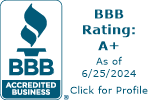Marking Time
"Let’s go measure your height on the wall!"
"Mama won’t let us write on the wall," cried Isla.
"Oh, she will for this," I said.
A Family Tradition
We marched into the kitchen, where Rachel had heard the conversation and had already picked out the wall to use. The three-year-old little guy backed up to the wall. I made a pencil mark and wrote his name and the date: 09/17/2024. Next in line was the six-year-old school teacher. She corrected me a couple of times before I got it right. Now for the one-year-old baby. Then, Dada.
A Delicious Meal
We ate a delicious pork tenderloin and grilled peppers from the garden. Rachel is the queen of sauces, and the lemon caper sauce for the pork did not disappoint! A colorful salad of heirloom tomatoes, cucumbers, and fennel finished us off.
A Smart Baby
The baby finished eating early and was put on the floor to wander and play. Within a few minutes, she found the mechanical pencil, headed to the marking wall, and started drawing. Wow! She's smart. I'm grandma, and I'm biased, but this girl is smart!
Daniel quickly grabbed the pencil from her tiny hands and told her, “We’ll save that for next time!”
We all had a good laugh, but it got me thinking about how much we measure our lives by the marks we make—not just on walls but in our daily actions. Every small step we take matters, whether it's building a fence, protecting our environment, or making lasting memories with family.
Leaving the Right Kind of Mark
At Louis Page, we believe in leaving the right kind of mark. Whether it’s our American-made wire mesh, fencing products, or service, we stand by the quality and reliability that our customers can trust. Just like the marks on that wall, we’re committed to helping you build something that lasts for generations to come.
If you’re ready to start your next project or need help finding the perfect solution, don’t hesitate to reach out. We’d love to be a part of the mark you leave on your world.
All my best regards in gratitude,
Debbie Page
CEO, Louis E. Page Inc – Woman-owned business and Family-owned since 1893. (That’s right! A little more than 131 years ago our family ancestor Louis Everett Page founded the company in Boston)










